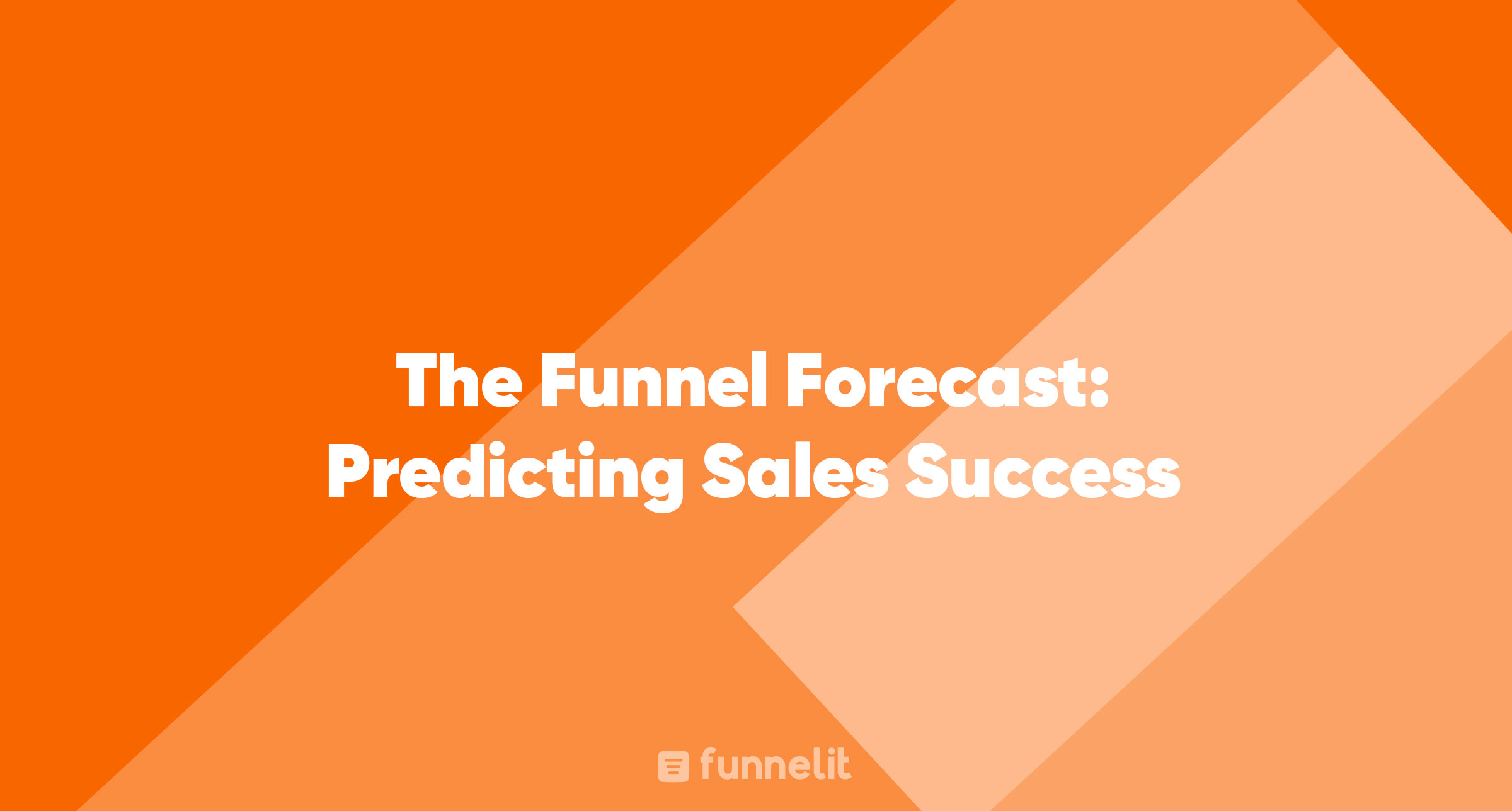As a business owner or sales manager, predicting sales success is a crucial part of your role. One of the most effective ways to accomplish this is through funnel forecasting. This method allows you to estimate future sales based on current data and trends, providing you with the information you need to make informed decisions and plan for the future. In this comprehensive guide, we will delve into the process of funnel forecasting, its importance, types, challenges, and how to overcome them.
Understanding Funnel Forecasting
Funnel forecasting is a strategic process that involves analyzing your sales funnel data to predict future sales activity. It helps businesses to allocate budgets, plan sales activities, and set achievable goals. In other words, it's a way of using current and previous sales data to predict your team's sales activity during an upcoming period. This allows for proactive planning and decision-making.
Consider the sales funnel as a journey that your potential customers take from the moment they become aware of your brand until they make a purchase. Each stage of the funnel represents different customer interactions, and forecasting involves analyzing these interactions to predict future sales.
Importance of Funnel Forecasting
Sales forecasting holds a pivotal role in business planning and decision-making. It provides valuable insights that can help you:
- Allocate budgets: By anticipating market demand, you can allocate the necessary funding to maintain a steady supply of products or services.
- Plan activities: Sales forecasts can guide decision-makers in prioritizing sales tasks. For instance, if predictions reveal a potential dip in sales, strategies can be adjusted, such as focusing on lead generation activities.
- Set goals: With accurate sales forecasts, businesses can set challenging yet realistic targets. These targets serve as a benchmark for the sales team, motivating them to strive towards these goals.
Steps to Develop a Funnel Forecast
Creating a funnel forecast may seem daunting, but it becomes manageable with a systematic approach. Here are the steps you can follow:
1. Build a Clear Sales Funnel and Pipeline
A well-structured sales funnel and pipeline can significantly improve the accuracy of your forecast. The sales funnel represents the buyer's journey, while the pipeline reflects the sales team's corresponding actions for each stage of the funnel. Understanding each stage of the sales funnel is crucial in creating an efficient forecast.
2. Choose a Sales Forecasting Method
Several forecasting techniques exist, such as historical forecasting, opportunity stage forecasting, length-of-cycle forecasting, and AI-enabled forecasting. Each method has its advantages and disadvantages, so your choice should depend on your business's unique needs and the data available to you.
3. Track Sales Metrics
Tracking key sales metrics is essential in any sales forecasting process. Some critical metrics to monitor include the average contract value (ACV), average deal cycle, average sales price, conversion rates, closing rate, churn rate, and the number of leads in the pipeline. These metrics can provide valuable insights into your sales performance and help improve the accuracy of your forecast.
4. Consider External Factors
External factors such as economic conditions, market trends, and competition can significantly impact your sales forecast. It's crucial to stay updated with the latest industry news and changes in the business environment to ensure your forecast remains accurate.
Sales Forecasting Models
There are several sales forecasting models that businesses can use to predict future sales. Some of the most popular ones include:
1. Historical Forecasting
This model uses past sales data to predict future sales. It's a straightforward approach but assumes that future sales will follow the same trend as past sales, which may not always be the case.
2. Opportunity Stage Forecasting
This model focuses on the different stages of your sales funnel. It estimates future sales based on the percentage of deals that typically close at each stage of the funnel.
3. Length-of-Cycle Forecasting
This approach uses the average length of your sales cycle to predict future sales. It's a useful model if your sales cycle is relatively consistent.
4. AI-Enabled Forecasting
This model uses artificial intelligence and machine learning algorithms to predict future sales. It can analyze large amounts of data quickly and accurately, making it an excellent option for businesses with complex sales processes.
Challenges in Sales Forecasting
Despite its importance, sales forecasting is not without challenges. Some of the potential hurdles include:
- Sales History: Newer companies with little or no sales history may find it challenging to create an accurate sales forecast.
- Data Accuracy: The accuracy of a sales forecast heavily depends on the quality of the data used. Inaccurate data can lead to incorrect predictions.
- Research: Extensive research is required to fill in the information gap, especially for businesses with no extensive sales history. This can be time-consuming and costly.
- Changing Market Conditions: Changes in the economy, industry trends, and market conditions can significantly impact the accuracy of a sales forecast.
Overcoming Sales Forecasting Challenges
While these challenges can complicate the sales forecasting process, they are not insurmountable. Here are some strategies to overcome these hurdles:
- Use Technology: Use sales forecasting software and CRM systems to collect and analyze data more accurately and efficiently.
- Conduct Thorough Research: Invest time and resources in researching your target market, industry trends, and competition to make well-informed forecasts.
- Constant Monitoring and Adjustment: Regularly review and adjust your sales forecast to keep up with changes in market conditions and business operations.
Final Thoughts on Funnel Forecasting
Sales forecasting, particularly funnel forecasting, is a vital aspect of sales management. It allows businesses to anticipate potential sales, plan effectively, and make strategic decisions. While it can be challenging, with the right approach and tools, you can create accurate sales forecasts that drive your business towards success. Remember, the key to effective sales forecasting lies in understanding your sales funnel, choosing the right forecasting method, tracking sales metrics, and being adaptable to changes in the business environment.
